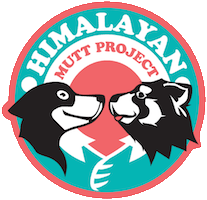Gim Ng's Himalayan Dream
- Gim Ng
- Jan 10, 2016
- 3 min read

Dr. Ng, a Singapore-based veterinarian, has worked with rhinos and big cats in Africa, but it’s always been her dream to help protect the Himalaya. She joined the HMP team in 2016 as a volunteer veterinarian.

It has always been a dream of mine to visit the Himalayas. As soon as I began climbing as a teenager, I started to dream of going to the legendary mountains in the Himalayas. I have been trekking in the high alpine since 2006, when I went to New Zealand to pursue veterinary science. Mountains teach us to respect Mother Nature, and how we need to be prepared for everything.
I’m extremely fascinated by Himalayan wildlife; from beautifully coloured Himalayan Monals, to Bengal tigers, Indian rhinoceros, red pandas and, my personal favourite, snow leopards.
I absolutely love snow leopards. Their thick coat makes them appear soft and cuddly but at the same time they are such powerful and efficient hunters. Snow leopards are known to be extremely elusive, and scientists can spend a very long time looking for them. I like the mysteriousness of that.

Dogs as pests
Although dog/wildlife conflict is relatively unheard of, it is certainly not rare. People are always quick to point out that cats kill wildlife, especially birds, but they also do not realise that stray dogs are also capable of killing wildlife. It is also known that ecosystems are vulnerable when faced with non-native predators like dogs. In the 1980s, researchers found that a single German Shepherd loose in New Zealand’s Waitangi State Forest was responsible for killing up to 500 kiwis. Imagine what might happen if that dog had reproduced? Invasive species like dogs can also upset the delicate balance in the ecosystem by occupying or taking over certain niches.
Dogs can potentially carry deadly diseases that can infect wildlife they come in contact with. Diseases can also spread from the wildlife to the dogs, and when the dogs wander into where people live to look for food, the disease they carry may also potentially spread to the humans that come in contact with the dogs.
Rabies is a viral disease that affects wild and domestic animals, and is spread to people in close contact with them. They are the source of the vast majority of human rabies deaths. Once the symptoms develop in people, rabies is nearly always fatal. This disease is neglected in poor and vulnerable populations, where measures prevent dog to human transmission have not been implemented. It is therefore very important to educate people in the rural communities about the dangers of rabies and how to mitigate the risks. Rabies also infect a huge range of animals, and if it is not controlled, it can potentially wipe out large populations of animals.
Benefits of Animal Birth Control
Capture, neuter and release programs, like those carried out by the Himalayan Mutt Project, aim to stabilise the street dog population and control the transmission of rabies. Return of sterilised dogs to their home territories prevent a “vacuum effect” of attracting new, unsterilised and potentially diseased dogs to unoccupied territories. These programs reduce the number of puppies in the population, who are at greatest risk of transmitting rabies, other diseases and worms.
Repeated pregnancies in dogs can physically stress them, increase risk of predation, and reduce food supply.
Free-roaming dogs in developing countries suffer extremely poor welfare due to the lack of access to veterinary care. They suffer constantly from malnutrition, parasitism, starvation and dehydration. Puppies are especially susceptible to diseases due to their underdeveloped immune systems.
By limiting the number of free-roaming dogs, there is also less competition between them for resources.

“I support the Himalayan Mutt Project because I love animals and I love the mountains. Although every effort to bring change may seem small, I believe that through time we can create a big difference.”
Being the Change
By stabilising the dog population and vaccinating them, we can lessen the ability of free-roaming dogs to reproduce and spread diseases to the people and wildlife.
We all have a part to play with respect to the environment, no matter how small the act. If I can contribute to the wildlife and environment, it is best that I use my abilities as a veterinarian to do so. The world is increasingly being urbanised and populated, I would love to be able to help in protecting one of the last few wild places on Earth.
The Himalayan Mutt Project has done very well in bringing awareness to the dog population inside and outside of Nepal, given its humble beginnings. It is also amazing that they are able to sterilise so many animals within a few short days, in so many towns, in addition to the difficulties faced in alpine conditions.
































Comments